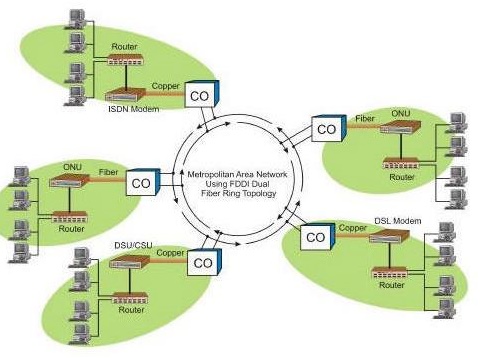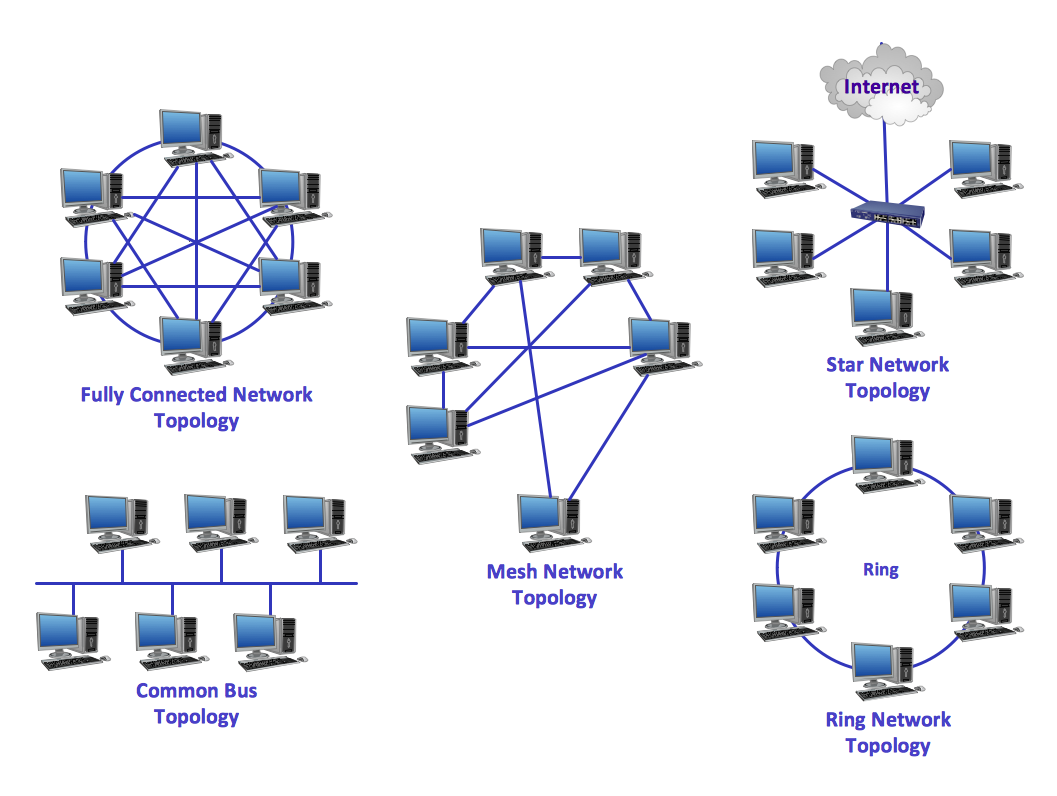What is Metropolitan Area Network?
“Computer science is no more about computers than astronomy is about telescopes.” Edsger Dijkstra
Introduction
It all began as a need to share resources. What existed as a concept and as an attempt to create first computer networks in the 1950’s, was achieved in the 1960’s by connecting few Universities. With the time passing by, the desire of early times for creating computer networks as an act of a curiosity had been converted to a need which will satisfy the demand. This then lead to advancements and enhancements in networking technology. With this said the need for connecting and interconnecting more computers to networks brought in itself the necessity to define topologies, architectures, technologies and categories of computer networks. This way the computer network types such as PAN (Personal Area Network), LAN (Local Area Network), MAN (Metropolitan Area Network), and WAN (Wide Area Network) were born.
As with the other types of computer networks, there are several definitions existing today for MANs as well. Among those, Harte (2003) describes MAN as “the group of interconnected LANs within the geographical border of a particular town or city.” It’s a computer network that is bigger then LAN, and smaller then WAN, in terms of covered area. In terms of transmission speed, MAN is a high-speed and high-bandwidth network infrastructure compared to both LAN and WAN which are slower. As with the other types of computer networks, the only and most important purpose that brought MANs into being is a need to share resources both hardware and software among users within an area that Young (2006) is calling a “metro region.”

Technologies
Since, MAN sits in between LAN and WAN thus acting as a bridge in between them, then a technology from both network infrastructures can be adopted for creating MANs. Among the legacy technologies used even nowadays to create MANs are: SONET-based TDM, ATM, FDDI, DQDB, and SMDS. Since all these technologies are non-IP based networks coming from Telecoms industries, proved to be expensive and complex to design, implement and maintain high-speed and high-bandwidth computer networks such as MANs. To overcome the issue of cost and complexity, new technologies for creating MANs are invented. Among such technologies that have emerged more and more nowadays are Gigabit Ethernet and 10 Gigabit Ethernet based on DWDM technology. With this said DWDM is becoming a driving force for Gigabit and 10 Gigabit Ethernet when it comes to designing speedy and wide MANs. The strong reason for adoption of DWDM technology by Ethernet networking technologies is the fact explained by Minoli and Johnson (2000):
Proponents of Dense-Wavelength Division Multiplexing (DWDM) make the claim that acceptance of the technology will drive the expansion of the optical layer throughout the telecommunications network and enable service operators to exploit the bandwidth capacity that is inherent in optical fiber but that has gone largely untapped until now. (p. 260)
Topologies
Among the existing computer networks physical topologies of nowadays, the most used for designing MANs undoubtedly is Mesh Topology. This is due to the fact that Mesh Topology of the MAN provides high availability of services in such networking environment.
That indeed MANs are a mixture of ingredients, does not speak for itself only physical topology, but also the networking media used in its design as well. With this said, obviously the mostly used networking media to create MANs links, in general it’s a mixture of fiber, wired and wireless technologies.
Same applies to logical topology as well, which enriches the list of mixture ingredients needed to design MANs. Thus, when it comes to transmitting data among networking devices of MAN, the most used protocols are the ones that are operating at Data-Link layer of the OSI model. In general, it would be protocols which are defined by the organizations such as IEEE, ITU-T, and proprietary standards as well as knowing that they share an acceptable percentage in designing MANs.

Benefits
It’s all about benefits reason why a particular campus, town, city of metro would go for a MAN. According to Cisco, MAN is a computer network infrastructure which facilitates the communications among local government, private businesses, organizations, utilities, educational institutions, libraries, and citizens within a specific physical area. Obliviously, one of the strong reasons why MANs are in expansion nowadays is all due to its enormous benefits. Besides allowing access to resources available in this networking infrastructure, lately majority of service providers in MANs networks are providing for its users the Internet access as well. Looking this from a philosophic point of view, it would be that the benefit alone is the existence of MAN itself. This in turn, facilitates the process of establishing an IT oriented society.
Dear readers, hope you find this post informative.
peace and blessings,
Bekim
References:
CS Odessa corp. (2015). Network Topologies. Retrived March 30th, 2015 from http://www.conceptdraw.com/How-To-Guide/network-topologies
Harte, L. (2003). Introduction to Data Networks – PDN, LAN, MAN, WAN, and Wireless Data Technologies and Systems. Althos.
Minoli, D., Johnson, P., & Minoli, E. (2000). SONET-Based Metro Area Networks: Planning and Designing the Next-Generation Provider Network. New York, NY: McGraw-Hill
Young, R. (2006). Metro Ethernet as a Wide Area Technology and Why It Must Be Secured. Belcamp, MD: SafeNet, Inc.